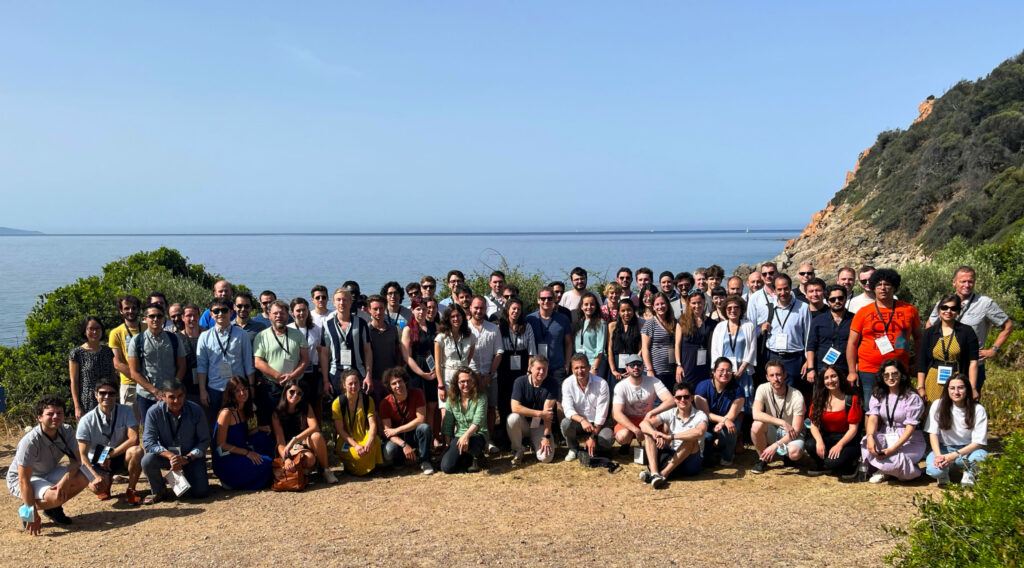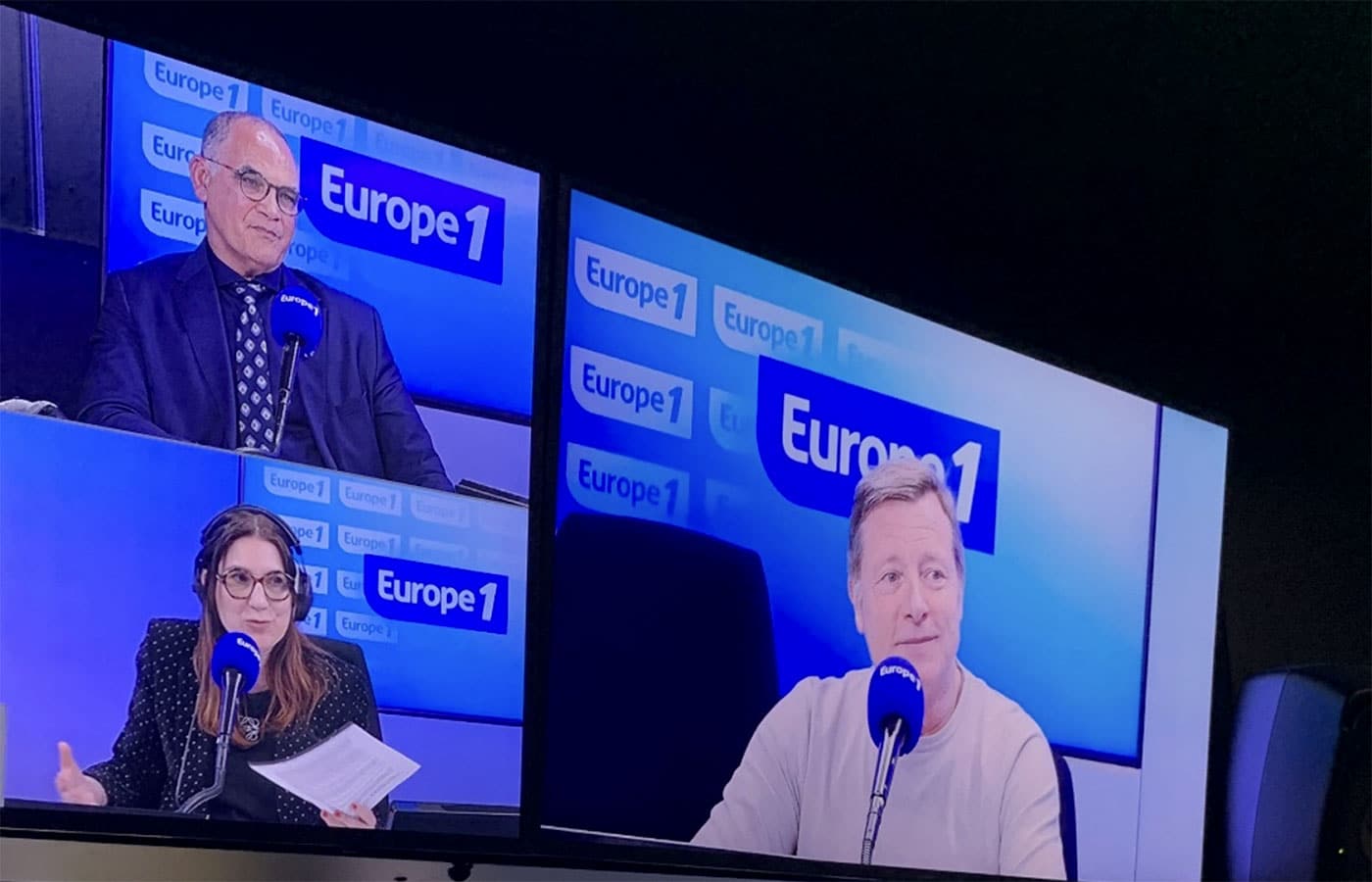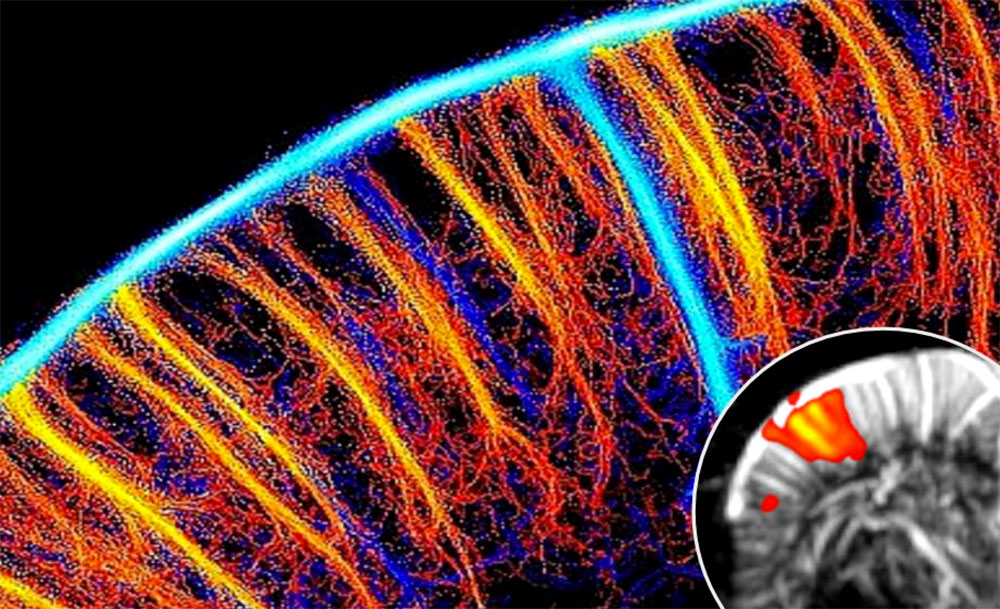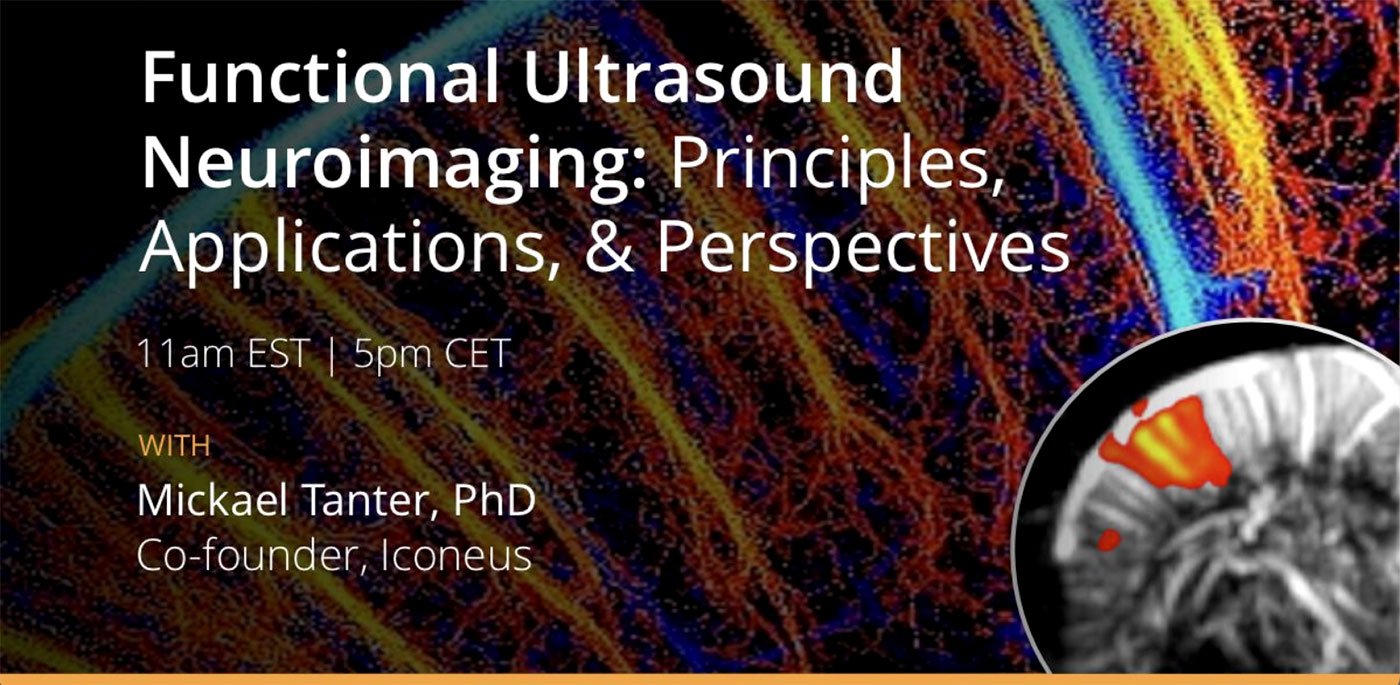We fully expected this second conference on the use of fUS for neuroscience applications to be full of exciting ideas, and it certainly didn’t disappoint! fUSbrain 2022 was organized by Physics for Medicine Paris, held at the Institut d’Etudes Scientifiques de Cargèse on Corsica, and took place over five full days, from 30 May to 3 June. Read on to discover some of the highlights.

Preclinical research…
On the preclinical side, the use of microbubbles for ultrasound imaging is gaining a lot of interest as a way of greatly enhancing the resolution, and enabling insights even with challenging animal models. On this theme, Mikhail Shapiro from California Institute of Technology explained his team’s amazing work using gas vesicles to image cell activity. These gas vesicles, he explained, are produced naturally by some algae to make them buoyant, and can be genetically encoded and expressed in mammalian cells. Remarkably, the conformation of these vesicles, and hence their ‘visibility’ to fUS, can be made to depend on enzyme activity in vivo, allowing tumor growth in the brain to be indirectly imaged.
Another highlight for many in the audience was our founder Mickael Tanter’s presentation on using microbubbles to resolve functional brain activity, known as fULM (functional ultrasound localization microscopy). He not only showed how resolution down to 7 µm gives results that are scientifically informative and visually stunning, but explained how this technology, building on recent work in neonates, will bring even closer the widespread adoption of fUS in the clinic.
…and clinical potential
Warming to this theme, two experts presented research that showed how fUS is already seeing emerging applications in the clinical setting.
Pieter Kruizinga from Erasmus Medical Center talked about the use of per-operative cortical mapping for tumor resection, explaining how the vascular structure and activity of the human brain can now be mapped using fUS directly in the OR, and that this (reassuringly) matches the data acquired using fMRI.
Another fascinating piece of work was presented by Vasileios Christopoulos from University of California Riverside, who described the first in-human fUS data showing hemodynamic changes in the spinal cord induced by electrical stimulation. His team had found that fUS can predict the state of the spinal cord within a single trial with high accuracy, with potential applications to patients with chronic back pain.
The state of the art in functional ultrasound
The above talks are just a couple of the many highlights from the conference – apologies to those we don’t have space to mention! It was clear to us that many attendees were impressed by the diversity of topics to which fUS is already being applied, and in his talk Mickael Tanter expanded on this point by giving his view on the ever-expanding range of capabilities of fUS.
He demonstrated this by reference to the availability of results in real-time on awake and freely moving animals, the ability to image mice transcranially, access to data on dynamic functional connectivity, and much more, and concluded with his belief that fUS is fast becoming a fully-fledged neuroimaging modality. Applications, he said, will mirror advances in the technology, and as well as growing use in preclinical and clinical studies, he pointed out the potential use for drug discovery, research into behavior and cognition, as well as the key research fields of stroke, small-vessel diseases, aging, and neurodevelopmental and neurodegenerative disorders.
A growing fUS community
As well as benefiting from the exceptional quality of the talks and posters, the conference was also a great success from a social perspective. As our Senior Scientific Application Specialist Jeremy Ferrier, Ph.D., said: “Not only was it interesting to hear about all the brilliant research conducted using fUS, it was very rewarding to see how we’re steadily growing as a global community”.
“Sharing ideas and discoveries is essential for progress in many areas of science, and it was a pleasure to find so many people willing to do this at fUSbrain 2022. We look forward to further expanding our network of scientists in the coming years, and to seeing what new breakthroughs have been made by the time of the next fUSbrain meeting!”.
Would you like to know more about the research presented by Iconeus staff at fUSbrain 2022? Click the links below to view video summaries from the authors.
Silvia Cazzanelli




